Florida State Football Offensive Preview
Last year they nearly made the playoffs, this year they started ranked in the Top 10 before falling 0-3 to three straight unranked opponents. Can Cal make it four?
In their first matchup as a member of the Atlantic Coast Conference, Cal opens conference play with last year’s near-playoff contender, Florida State. It will be the first ever matchup between these two teams.
FSU was controversially left out of last year’s 4-team college football playoff, with the CFP Committee opting to take the SEC Champion Alabama at #4 after they upset Georgia in the SEC Championship game (Alabama was 12-1 with their sole loss being an OOC matchup with Texas), the Big 12 Champion Texas at #3 (also 12-1, with their sole loss being in-conference rival and top contender Oklahoma), as well as the undefeated Pac-12 (Washington) and Big Ten (Michigan) Champs. It was the first time an undefeated team from a power conference was left out of the playoffs, something usually only reserved for upstart G5 teams. FSU’s offense suffered a massive blow in the 11th game of the season, losing star quarterback Jordan Travis to injury. The backup quarterback, Tate Rodemaker, was then injured in the 4th quarter of the following game against Florida.
Despite this, FSU continued to win, and won the ACC Championship on the strength of their defense, thanks to a defensive line and secondary loaded with future NFL Draft picks. The CFP Committee rationalized that an FSU squad down to its 3rd string freshman quarterback didn’t stand a chance in the playoffs, and left 13-0 FSU at #5. No matter how you view the playoffs—should it be the 4 best teams, or the teams with the 4 best resumes?—FSU’s omission from the playoffs made no sense. If you believe that an undefeated power conference team belongs in the playoffs, FSU should have been in the playoffs. If you believe the 4 best teams belong in the playoffs—despite their records—then Georgia probably should have been in the playoffs (although this would cheapen the entire purpose of the regular season— why even play the regular season games at that point).
So the CFP Committee decided to do neither of those things. They selected Alabama, because there’s no way an SEC Champion would ever be left out of the playoffs. Then they rationalized that Big 12 Champ Texas deserved to leapfrog FSU to get into the playoffs, because they had already defeated Alabama earlier in the season, and a quality win over an SEC Champ is surely also worth a playoff berth. Of course, this is all a moot point, because Big Ten Champ Michigan defeated Alabama and Pac-12 Champ Washington defeated Texas.
In my humble opinion, FSU had earned themselves the right to be blown out in the playoffs with their 13-0 record. The CFP Committee should have had FSU at #3, and agonized between Alabama and Texas for the #4 spot. I would have opted for Texas, but for college football reasons that can’t be adequately articulated, the SEC is not allowed to be omitted from the playoffs—only other conferences are allowed to be snubbed in favor of allowing too many SEC teams into the playoffs.
Instead, #5 FSU faced #6 Georgia in the Orange Bowl, and FSU suffered the worst blowout in all of bowl game history, losing 66-3 to Georgia. Had FSU defeated Georgia, it would have been somewhat plausible for a 14-0 FSU team to make their own national championship claim. Of course, FSU had a lot of bowl game opt-outs (their starting RB, two WRs, an NFL 1st round DL, etc), but in my completely non-biased (up to this point) opinion as a football observer… I believe they would have been blown out by Georgia even with Jordan Travis and all their starters. The Orange Bowl opened with FSU getting a 4th down stop on Georgia, but it was followed by NINE straight touchdown drives. Georgia was playing their 2nd- and 3rd-stringers by the second half, and FSU still couldn’t muster anything up. For what it’s worth, I don’t think their problem was just opt-outs—I think even the coaching staff completely mailed it in for that bowl game. Their game plan and execution was beyond awful.
Prior to last year’s run, FSU owned a Cheez-It Bowl victory and a slew of 5-7, 3-6, 6-7, 5-7, 7-6, etc records. With the sympathy of the college football world and back into national prominence, what did FSU do?
They promptly tried to blow up their conference—screwing over everyone else in the conference that had carried them financially—in pursuit of the almighty dollar.
This is why there is no better Pac-12 analogue to the FSU football team than USC. While culturally they may be more of an ASU-type party school, their football team is devotedly followed by non-college educated, Walmart-type fans; just like USC.
After a single season of national relevance (same as USC in 2022, when they started the season 11-1 with Lincoln Riley and Caleb Williams, after over a decade of being a monetary drain on the conference with their football incompetence despite their blue chip brand), FSU decided they were too good for the conference, and needed to leave.
When you see that Garnet & Gold jersey, you should be picturing a Cardinal & Gold jersey instead. That’s who FSU is.
After FSU decided they were too good for the ACC, they sued the conference in an attempt to break the Grant of Rights to leave the conference. FSU opposed Cal and Stanford joining the ACC, claiming that doing so would “dilute…. the value of existing members’ media rights… and diminish the ACC’s already deemed inadequate ‘strength of schedule’ ratings going forward.” Florida State, Clemson, and North Carolina opposed Cal/Stanford/SMU joining the ACC, and demanded a “success-based” revenue distribution, which would come solely from the performance of teams in “revenue-generating postseason competition.” Florida State then cites Cal and Stanford’s acquiescence to these demands as proof that the new ACC members lack “the media caché [sic]” necessary for ACC members “vying for a position in future CFPs.”
In other words, FSU used their position of power to bully Cal into reduced media payouts, negotiating larger revenues for post-season success… and then they started this season 0-3. This is despite the fact that FSU is reportedly spending an absurd $12 million dollars on NIL deals.
I’ll forgive FSU for doubting Cal’s lack of “media caché”, as they are obvious unfamiliar with our meme game. However, I won’t forgive them for claiming Cal would diminish their strength of schedule while Cal is defeating SEC teams as FSU is losing to AAC schools. FSU used their position of power to negotiate a bigger payout for postseason performance (which they are now trying to amend to television viewership or another metric in the wake of their awful start to the season), but it’s Cal that’s actually closer to the postseason payout than FSU. How do you like them apples? FSU claims they’re not being paid enough for the value they add to the conference. At this point, the ACC’s countersuit may just be a picture of FSU’s record.
FSU is the first team to ever start the season in the AP Top 10 and then go 0-3 to 3 unranked teams. They’ve already clinched the under on their season total of 9.5 wins.
But what about Seminole Nation?
I’m probably better off leaving faux political correctness to the Twitter burners, but instead of launching into another diatribe about their team branding, I’ll merely point you to this article:
Yet there are no protests against this spectacle, no angry editorials and no politicians jumping on the issue. Why is that? Because as any Florida State fanatic will shout at you, the university has “a formal agreement with Seminole Nation” and that makes everything all right. Fans treat this much-touted agreement like they have a “racism amnesty card” in their back pocket. The approval of the Seminole Nation, they will tell you makes it all A-okay. Actually it doesn’t. It doesn’t first and foremost because the existence of this “agreement with the Seminole Nation” is a myth.
The agreement is with the Florida Seminole Tribal Council and not the Seminole Nation. The majority of Seminoles don’t even live in Florida. They live in Oklahoma, one of the fruits of the Seminole Wars, the Indian Removal Act and The Trail of Tears. These Oklahoma Seminoles—who, remember, are the majority—oppose the name. On October 26, 2013, the Seminole Nation of Oklahoma’s governing body passed a resolution that read in part, “The Seminole Nation condemns the use of all American Indian sports team mascots in the public school system, by college and university level and by professional teams.”
Of course, FSU has never been a particularly racially sensitive. You may remember this awful MLK Jr. Day graphic, featuring MLK Jr. with a photoshopped FSU glove:
Ok, so maybe it’s just the administration, the school, and the marketing department that happen to be ignorant. What about the fans?
Surely they don’t have a bad history of, say, calling for their black head coach to be lynched or anything like that, do they? Or having FSU fans themselves getting racially harassed by other FSU students? They wouldn’t racially harass opposing players, would they?
Speaking of FSU fans, I’d be remiss if I didn’t mention this guy:
This post caught national attention even as the FSU fan declined to follow through. His profile pic is an obviously AI-generated image (and hence he was never going to follow through on this ‘bet’ anyway), and I’ll give you 3 guess as to why an FSU fan would want to create a fake account disconnected from his real identity. FSU has not won a game since, and many people are saying that this could be the curse of “FSPoo”, that FSU is doomed to lose until this FSU fan follows through on his poo bet.
F-S-U has certainly been playing like F-S-Poo. Let’s take a closer look at the positional breakdown and see why.
Quarterback
FSU is led by Oregon State transfer QB DJ Uiagalelei. Right now he’s receiving a disproportionate amount of the blame for the FSU offense, and although he does deserve his share of criticism (and we’ll get to that in a bit), FSU is suffering a complete breakdown of the offense. They currently rank 128th out of 133 FBS teams in total offense, and it starts with a failure to get the run game going. The offensive line gets beaten, misses blocks, and sometimes just runs plays that are schematically doomed to failure. It doesn’t matter who FSU has in the backfield; a lot of their run plays are doomed to failure, which is why FSU is 2nd to last in the FBS in rushing offense, averaging a mere 52.0 yards/game.
Here’s an example of a negative play on 1st down:
And here’s another negative play on 1st down with a different running back:
And here’s yet another negative play on 1st down with a different running back:
It doesn’t matter who is in the backfield; they’re always facing an uphill battle.
Maybe they’re just a pass-heavy team, you might think. They have 71 rush attempts to 100 pass attempts for about a 40/60 rush/pass split, so not terribly so. And while the passing offense is slightly better, they’re also clearly underperforming. Before we take a look at QB DJ Uiagalelei, let’s take a look at his supporting cast.
Uiagalelei relied heavily on a pass-catching tight end last year at Oregon State (to complement his speedy but undersized deep threat receivers), and although FSU would very much like to get the tight ends involved in the passing game, it hasn’t been working out so far:
There have been far too many plays where the tight end is unaccounted for, and what should be an easy completion is not:
Here’s Uiagalelei’s top receiver:
Here’s a standard 3rd down play:
And because FSU doesn’t trust their run game, here’s an example of FSU trying to get creative on 3rd and short:
Notice how all these plays are on 2nd and long or 3rd downs? FSU’s run offense fails them on early downs and puts them behind the 8-ball on later downs, and in obvious passing situations, the passing offense also fails them. The result is one of the worst offenses in the entire FBS. While some people are quick to heap blame on the quarterback, football is a team sport, and this is why I think FSU’s offensive struggles can’t be fixed by merely replacing the quarterback. The backup quarterback is the most popular player on a losing team, but I watched their backup quarterback too, and I can safely say that Uiagalelei gives them their best shot of winning. Playing the backup quarterback would be capitulating on the season.
Although casual fans have a very negative opinion of QB DJ Uiagalelei after an 0-3 start to the current season, Cal fans remember how efficiently he picked apart the Cal defense, as he had his best game of the season last year against Cal. Uiagalelei was actually the 12th most efficient quarterback in the FBS last year, with a QBR of 80.8—just above FSU’s quarterback Jordan Travis (13th, 79.6). FSU fans thought they were getting another Jordan Travis, who nearly led FSU to the playoffs last year. Uiagalelei is currently 88th in the FBS in QBR, placing him in the bottom third of FBS quarterbacks.
Let’s start with the basics of DJ Uiagalelei — and if you’re really curious, you can review my Oregon State preview of him from last year:
Oregon State Football Offensive Preview
Oregon State was a 10-win team last year. Ten wins. Coach Jonathan Smith has proved to be one of the few successful alumni-coaches, leading OSU from a 2-10 record in 2018 to a 10-3 record in 2022. Oregon State has done a great job of doing more with ‘less’ (per 247Sports, their average recruiting ranking in the Pac-12 has been 10th place), developing pl…
DJ Uiagalelei has the prototypical NFL size and strength that pro scouts drool over: he has a big frame, athleticism, and an absolute cannon of an arm. He can run the ball and bulldoze defenders, or he can merely flick his wrist and launch the ball downfield.
Although his mechanics can be inconsistent (especially when you can rely entirely on your arm), Uiagalelei showed the ability to execute nice touch throws, especially when given a clean pocket:
And because of Uiagalelei’s incredibly strong arm, he can effectively threaten any area of the field. Here Uiagalelei fires a laser to the complete opposite side of the field, making a throw of approximately 45 yards through the air with the ease of a 10 yard pass:
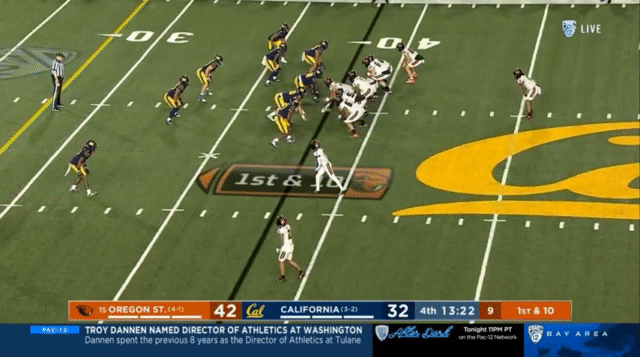
Cal fans saw firsthand last year just how good of a passer Uiagalelei can be when he lives up to that NFL potential, so let’s instead focus on what’s gone wrong for him so far this year. Uiagalelei is a rhythm passer— against Cal last year, he faced just 9 defensive pressures all game (0 QB hits, 0 sacks) on 25 dropbacks (36%), which gave Uiagalelei plenty of time to sit in the pocket and pick apart a strong Cal secondary. FSU’s opponent last week, Memphis, pressured Uiagalelei 20 times on 37 dropbacks (54%), with 4 sacks. The FSU offensive line hasn’t been able to protect Uiagalelei well enough to allow him to establish a rhythm the way Oregon State’s offensive line did (and to be fair, I don’t think many people realize how good Oregon State’s offensive line was— the right tackle, Taliese Fuaga, was a 1st round NFL Draft pick).
One of Oregon State’s most successful plays last year was relying on their speedsters to get open deep, and Uiagalelei could hit the (very) deep ball for a huge gain. Although FSU hasn’t been able to connect on that play too many times this year (due to QB pressures), Uiagalelei clearly still has it:
Uiagalelei’s mobility allows him to buy time in the pocket, and he can make off-platform throws:
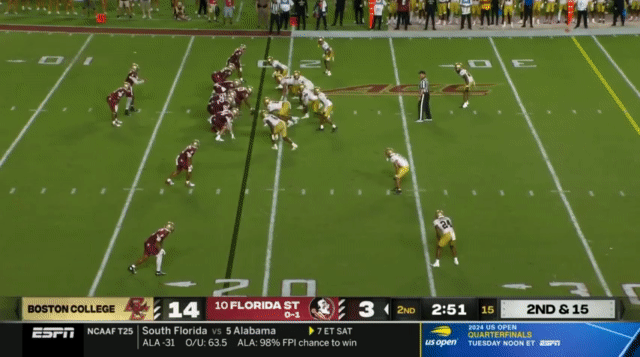
Uiagalelei has had a lot of success this year on designed roll-outs to his right. Here he fires a bullet into a tight window for the completion:
Conversely, Uiagalelei has struggled on throws where he rolls to his left, but despite his inconsistent mechanics, he can use all arm to fire off the throw:
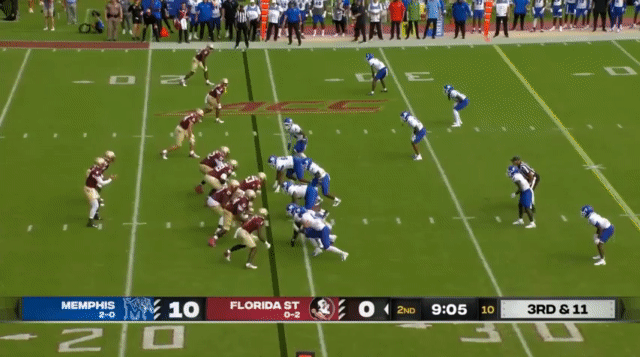
Of course, Uiagalelei is still a threat to run the ball, although he generally keeps his eyes downfield and prefers the big pass play:
Uiagalelei has also struggled this year with timing throws and chemistry with his wide receivers. Maybe this will improve through the course of the season, but Uiagalelei has missed a lot of throws he shouldn’t like these:
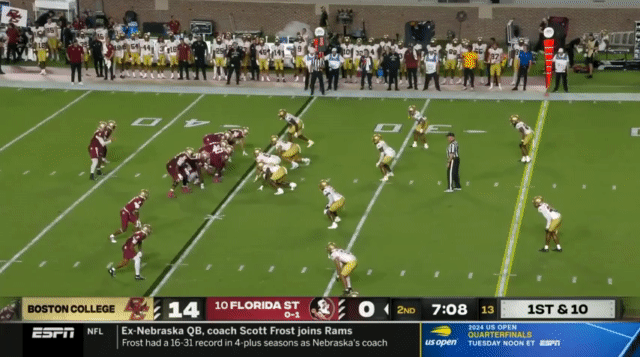
It does feel like Uiagalelei is missing throws at a much higher clip this year. He’s not consistent with his stride length, and here it looks like he’s afraid to step into his throw as his offensive linemen are being pushed back into him, resulting in an errant throw on a wide open receiver:
As mentioned earlier, Uiagalelei loves the deep ball, but he doesn’t always have time to let the play develop the way it did at OSU:
Because the chorus of casual fans demanding the backup is getting louder, I went back and re-watched last year’s ACC Championship game as well as their Orange Bowl to watch redshirt freshman QB Brock Glenn. FSU’s other freshman quarterback from last year, AJ Duffy, is now the 3rd string quarterback at FSU (I was hoping we’d get to see him play last week to serve as sort of a pseudo-benchmark).
Glenn is decently mobile, and not shy of contact:
There were not a whole lot of positive plays in those 2 games that I could use for highlights. Glenn’s main purpose was to hand the ball off and make safe throws, but he was a bit more bold against Georgia. Here he makes a nice throw, but surprise surprise, another costly drop:
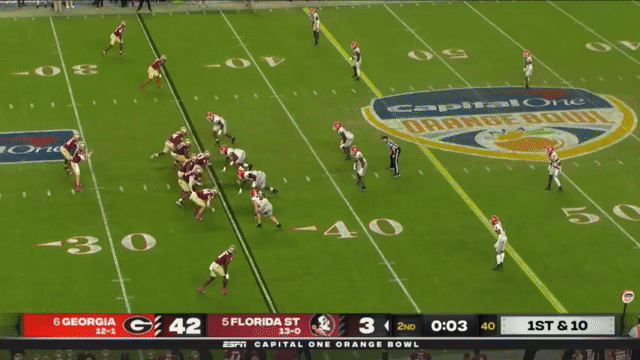
Here Glenn makes a nice deep throw, but unlike this season, gets a pretty good assist from his receiver (which led to FSU’s only points for this game):
It’s too early to make this call, but I don’t think that Glenn would specialize in deep throws, particularly in the way Uiagalelei can:
I believe Glenn is more effective in shorter range throws, such as this nice back shoulder throw:
Of course, as a freshman, he still has work to develop his reads (although this is clearly excessive by his receiver here):
The other backup quarterback is true freshman Luke Kromenhoek, the 4th rated QB in the class of 2024 with high 4-star rating. Thus, it seems unlikely to me that we’d see a backup quarterback unless FSU is being blown out (and which, due to many years of Cal fandom, I don’t believe will ever happen).
Running back
The running backs have not been given much opportunity to shine so far this year, so this section is more difficult to write than usual. The starting running back is Roydell Williams, a transfer from Alabama (one of many on this year’s squad). Williams has a power-running style, with a strong lower body, and an ability to keep his center of gravity low to churn out difficult yards:
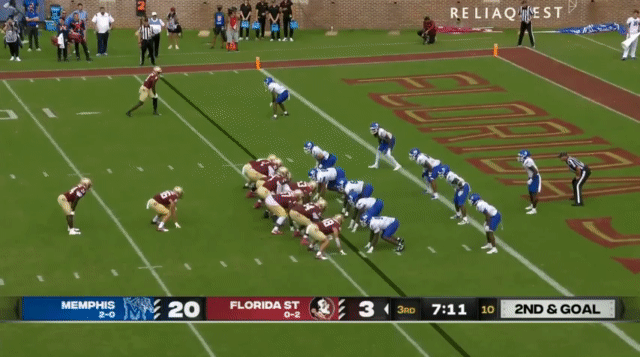
I haven’t seen breakaway speed or too much elusiveness; Williams opts to run through contact:
Backing up Williams is the versatile Lawrance Toafili, who often also lines up in the slot or even out wide. Although not as big as Williams, he does possess more speed (although not a terrible amount of elusiveness either). Here RB Roydell Williams sets Toafili up with a nice block as Toafili beats the defender to the edge for a touchdown:
In fact, all of Toafili’s longer runs this season have looked like this:
Here Toafili shows off some of that speed:
And here’s an example of Toafili lining up as a receiver and demonstrating his route running ability, although he hasn’t connected on a big pass play yet this season:
Lastly, there is the true freshman Kam Davis, who was actually a high school quarterback and converted to the running back position. I assume it will take him some time to learn the nuances of the RB position, but he has a similar frame and running style as Roydell Williams:
Although Davis has yet to be used in this fashion, his versatility as a quarterback and even receiver mean that he poses a dynamic threat out of the backfield.
One thing worth mentioning is the positional versatility of the running back group. FSU will often line up with 2 RBs in the backfield (21-personnel, i.e. 2 RBs, 1 TE), and you have e.g. a competent slot receiver in Lawrance Toafili in the backfield, or a former high school quarterback in Kam Davis, or even a former running back like Ja’Khi Douglas in the slot receiver position. FSU has these players who can fulfill multiple roles, and they’ll use motion to swap them around (1 RB in the traditional RB role, another RB running a route as a receiver, a receiver motioning into the backfield, etc), but they haven’t really done all too much with that so far this year. I have to imagine there is a good reason that they like running 21-personnel so often, so I imagine some creative plays from the RB position are coming. I just haven’t seen many yet.
Receivers
I want to start with the tight end, Kyle Morlock, who is one of the most targeted receivers on the team (although he has the lowest reception percentage of the receivers). Oregon State killed Cal last year with the tight end faking a block before leaking out as a receiver (TE Jack Velling had 3 TDs on 4 receptions). I’ve seen FSU run similar TE plays to the ones OSU ran last year, they just haven’t found the same success with it. One example:
In case it wasn’t clear from previous clips, but the tight end Kyle Morlock has really struggled with drops. I’m presuming it’s just a slump he’s in, but I watched FSU’s last 5 games and have never seen so many drops in such a stretch. It feels like mental mistakes—turning to run before finishing the catch, and then getting in your own head about drops just makes the problem worse, etc. Even so, Morlock has not been a particularly adept route runner either, another drawback for a pass-catching TE.
Not being able to rely on tight end receptions is definitely a crimp on the offense.
Uiagalelei’s top target this year is the speedy receiver Malik Benson, another Alabama transfer. He was a high school track star, and he has shown elusiveness after the catch. His speed makes him Uiagalelei’s top deep threat (as seen in the Quarterback section), but he’s also a solid route runner:
He’s reported to have contested catch ability, but I haven’t seen it demonstrated much:
Here Benson shows some slipperiness in the open field:
FSU’s top return wide receiver is the slot receiver, Ja’Khi Douglas ( a former running back). Although he’s a bit undersized, he has good speed and play-making ability, and hence FSU will try to get Douglas the ball in open space (e.g. on a jet sweep, etc). Here he shows some of that speed:
Here Douglas runs the ball using his versatility as a bit of a gadget player:
Here the defensive back gives Douglas a large cushion and plenty of room to make a play:
Opposite Malik Benson is another speedy receiver, the redshirt freshman Jalen Brown. Although his speed would make him an ideal deep threat, he has primarily been used so far this year on short routes. He hasn’t been targeted too many times yet, but he’s so far shown reliable hands:
Another speedy and elusive receiver (seeing a pattern?) is the redshirt senior Kentron Poitier, another potent deep threat. He had a great catch in the game against Georgia last year, and this year he’s shwon some nice run-after-catch ability:
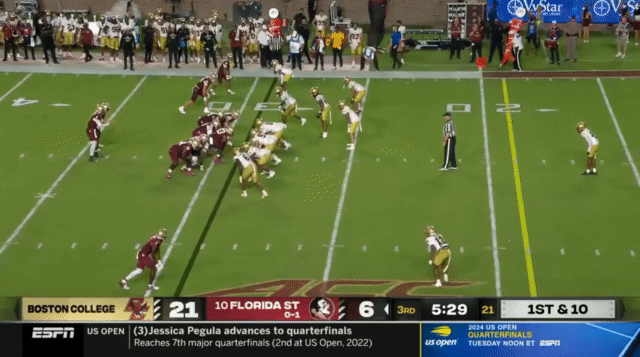
FSU has a lot of tall, rangy, speedster receivers who have so far been underutilized this year. Uiagalelei has athletic receivers who can make big plays, but both play-calling and a failure in execution (like poor protection by the offensive line and drops by the receivers) have meant that FSU hasn’t yet found much success on explosive plays.
Conclusion
The FSU offense, while supremely individually talented (like any standard USC team), has yet to put it all together this season. The offense looks absolutely awful, which belies their real potential. FSU put together a 13-0 record last year thanks largely due to the strength of their defense, and their defense this year is still filled with NFL-caliber players, but they just so happen to be underperforming. They even have strong special teams; with a kicker that is 3/3 from 50+ yards so far this season, with a season long 59-yard FG. Their offensive line has been manhandled in every game so far this season, and based on early season results, I expect the Cal front-7 is capable of similarly harassing the quarterback and stuffing runs. It’s imperative that Cal gets consistent pressure on QB DJ Uiagalelei to prevent him from getting into a rhythm, because rhythm passing is where he excels (and because Uiagalelei has the measurables of a 1st round NFL Draft pick QB, even if he doesn’t play like it; he certainly has that potential). If Cal plays as well as they did against Auburn, and FSU continues to underperform, then obviously Cal has a good chance at this matchup. I think this game will come down to whether or not FSU can finally get their act together. If FSU were to ever live up to their playoff-caliber potential, they would obviously be too much for even the scrappiest of Cal defenses.
As always,
Go Bears!
Stay safe in Tallahassee.
You can find my full clips here.


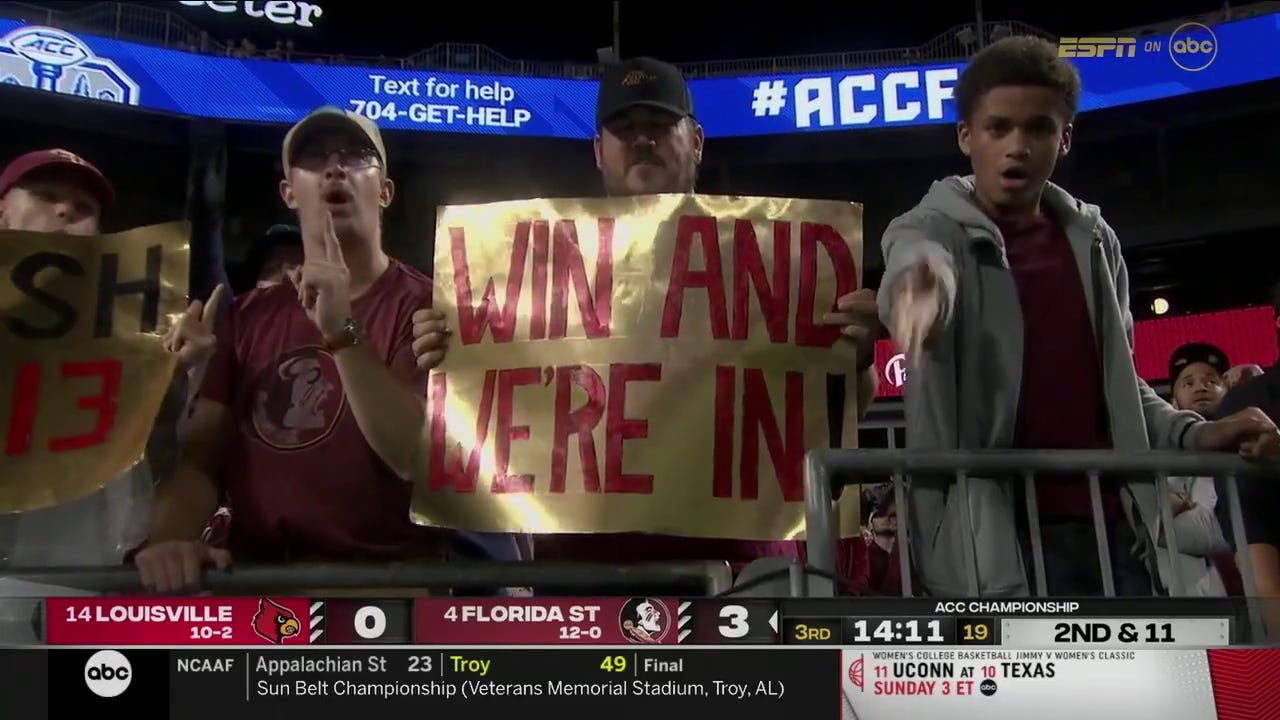

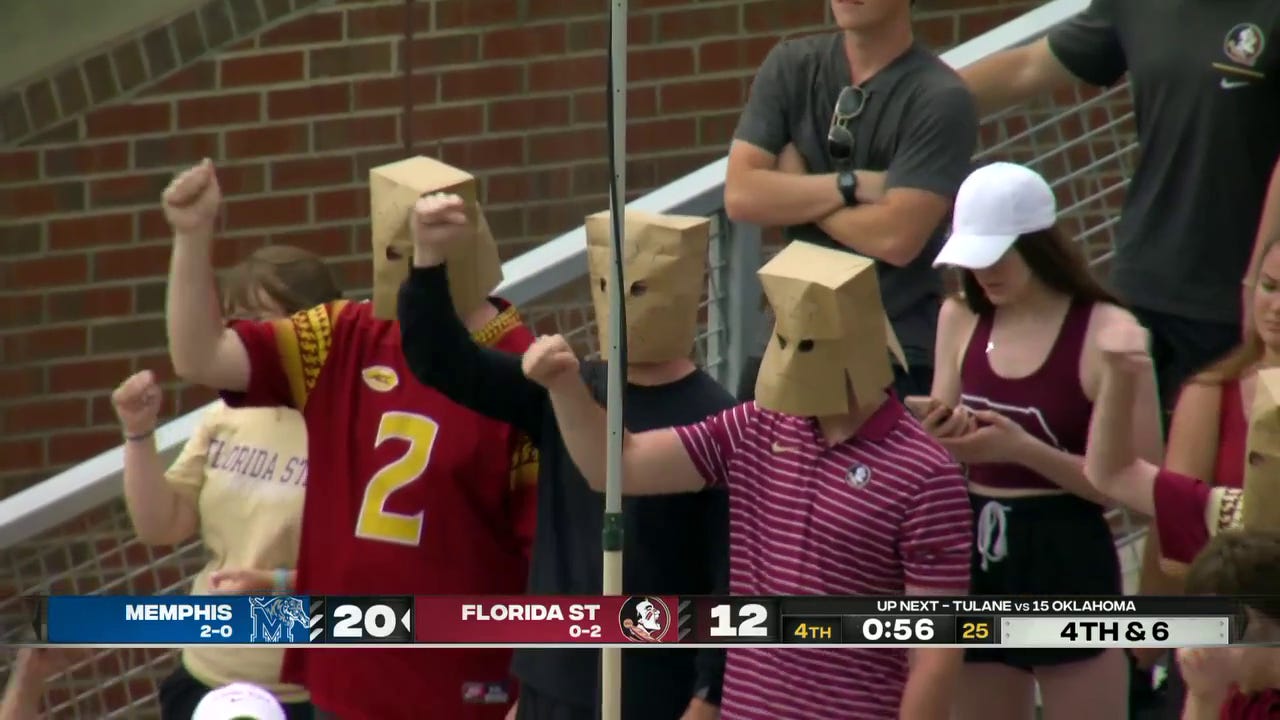
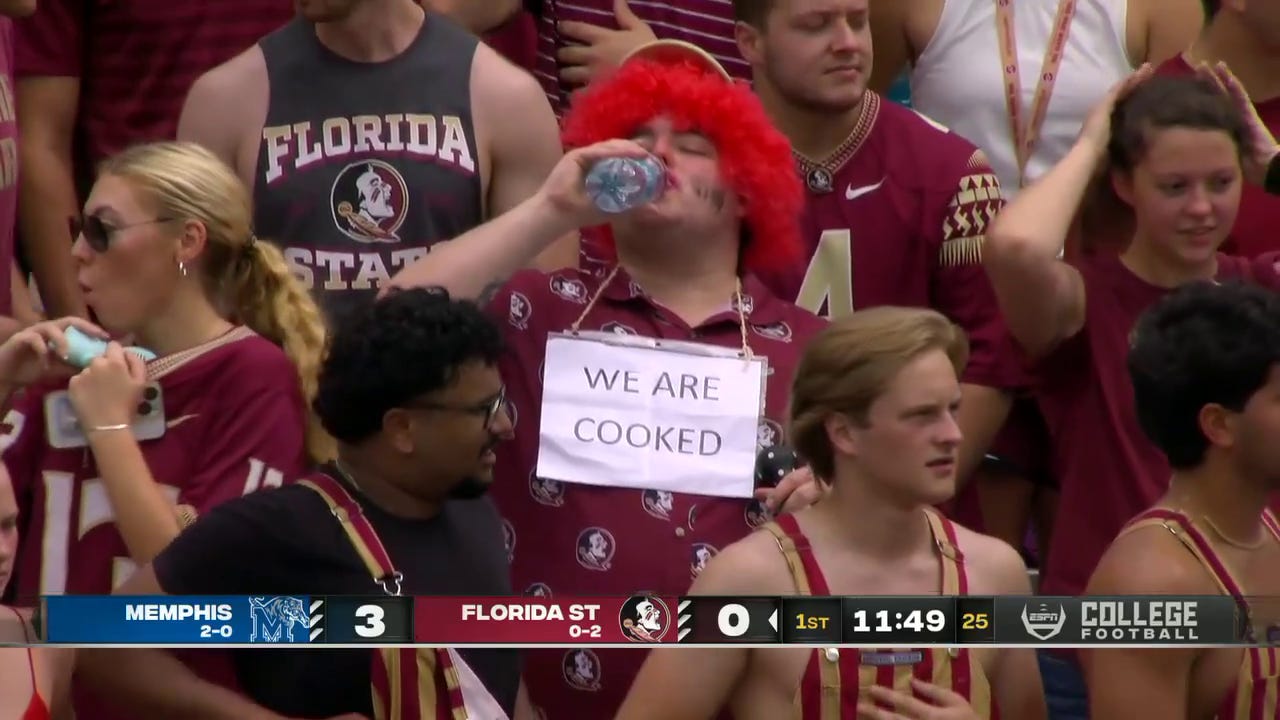
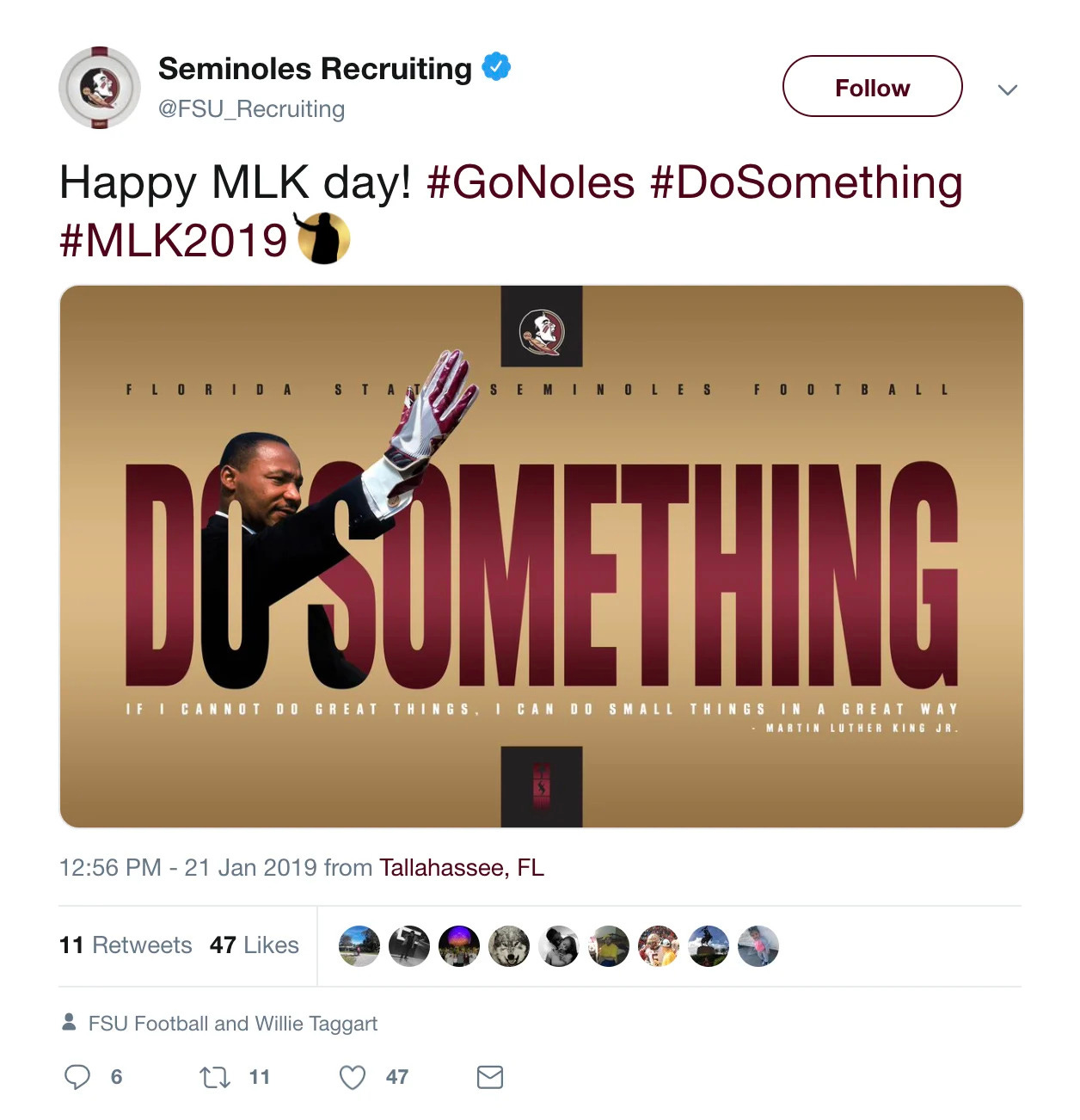

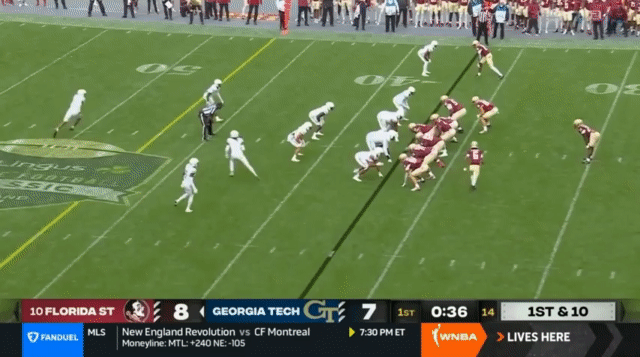
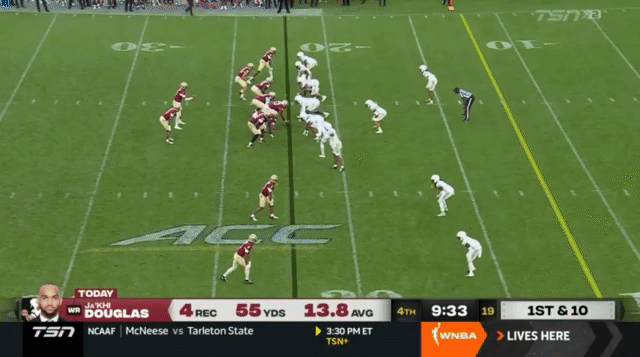
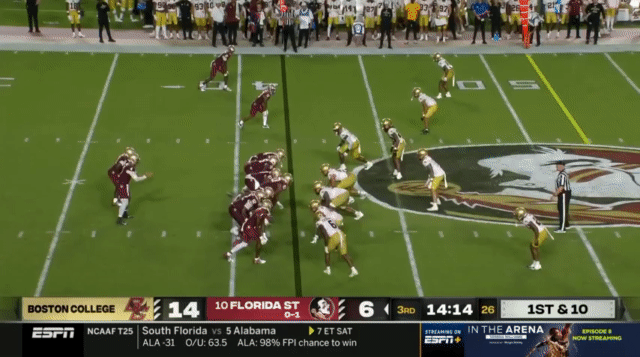
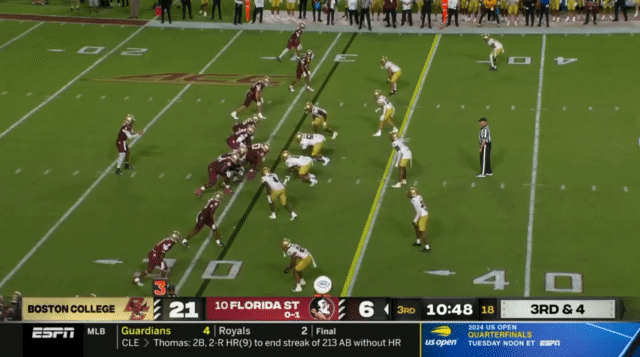
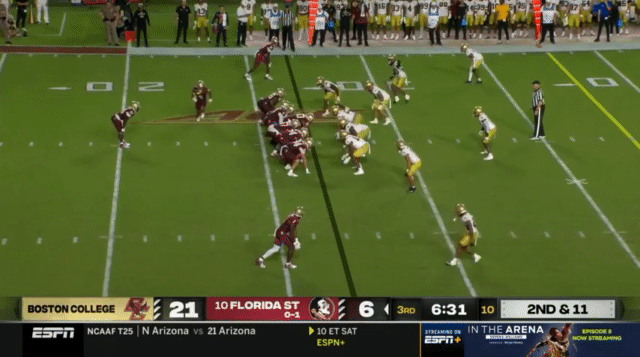
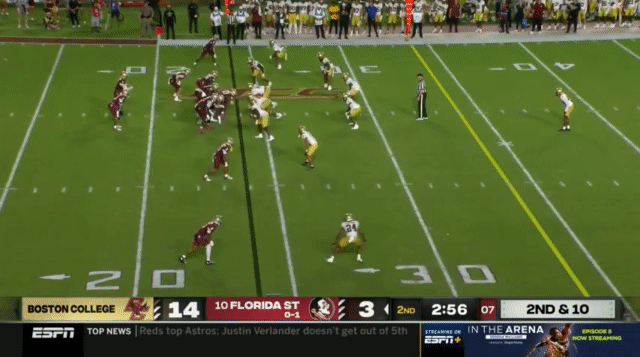
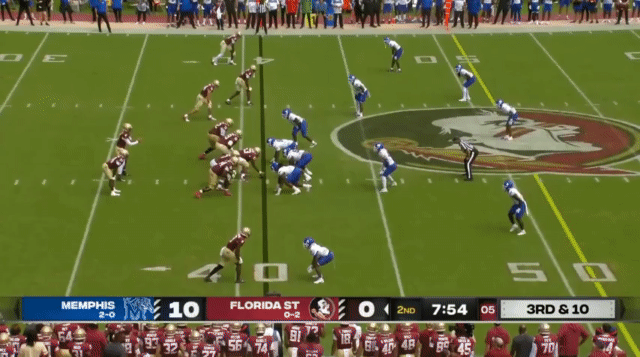
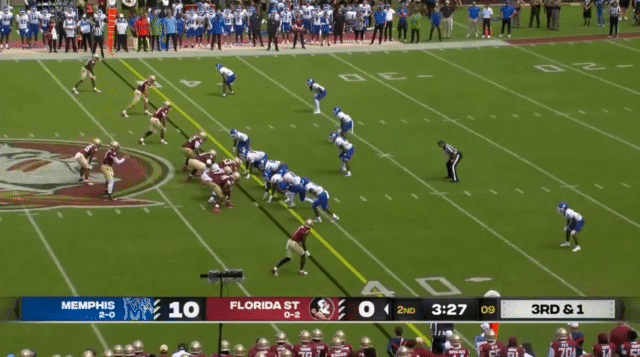
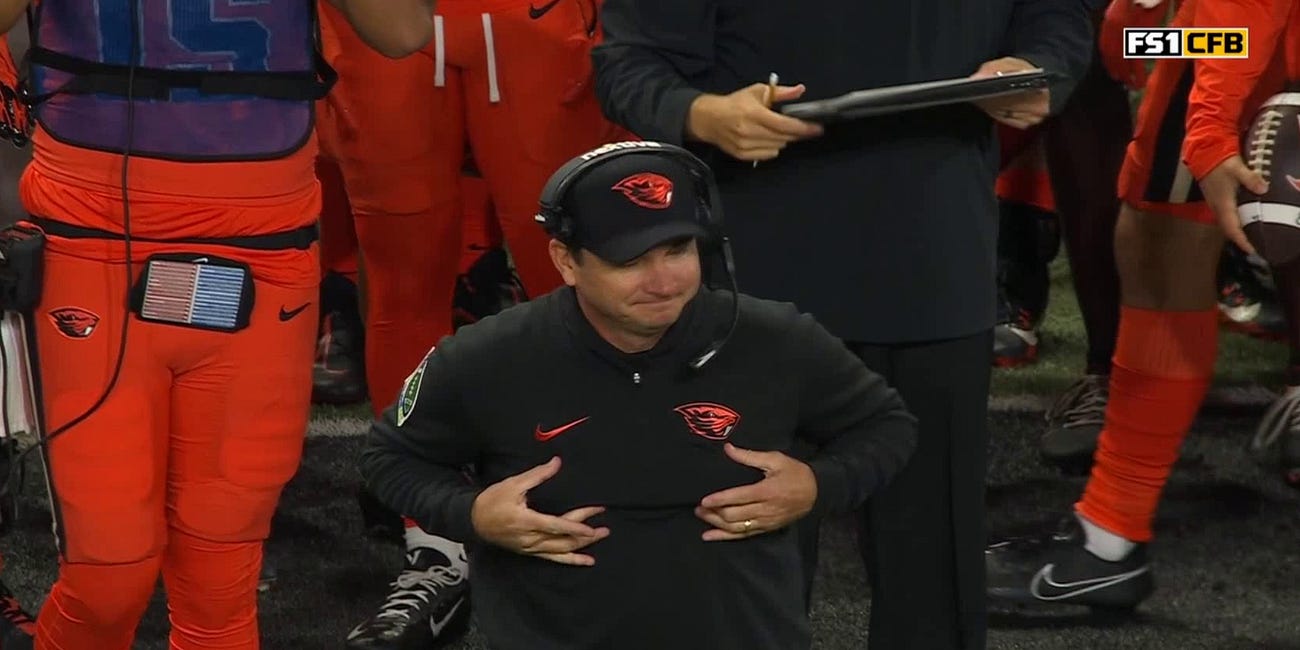
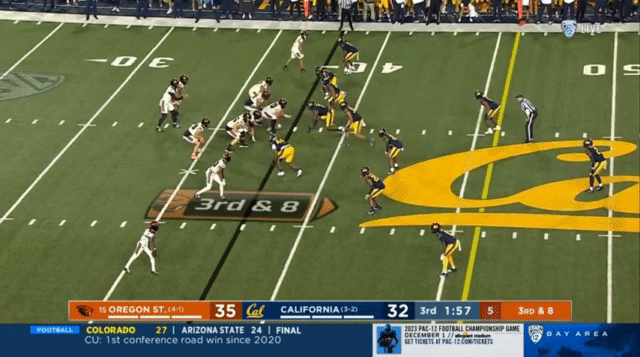
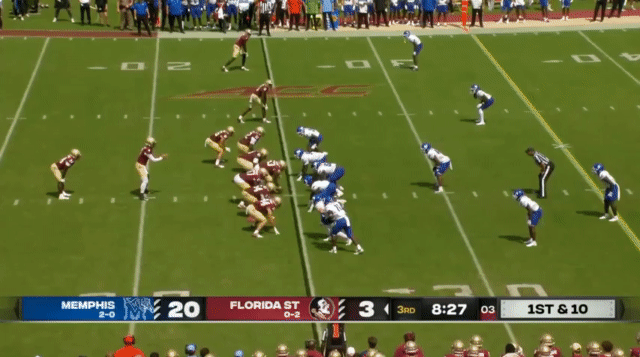
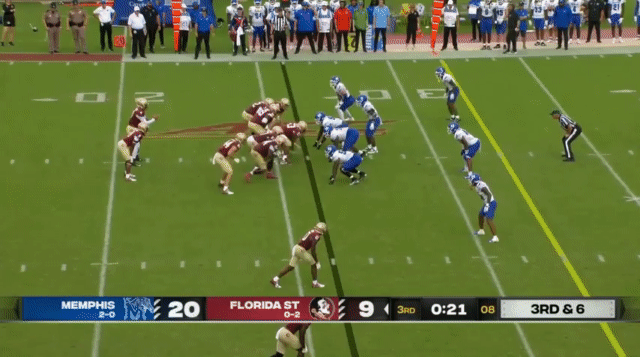
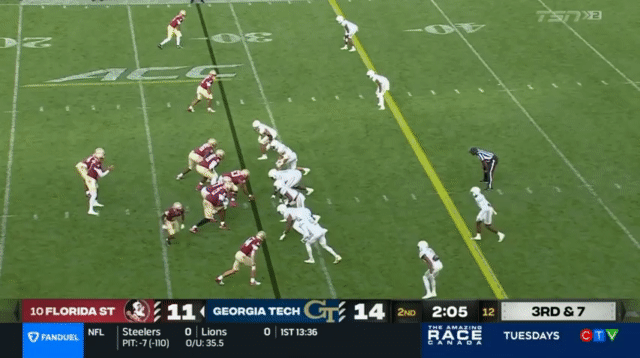
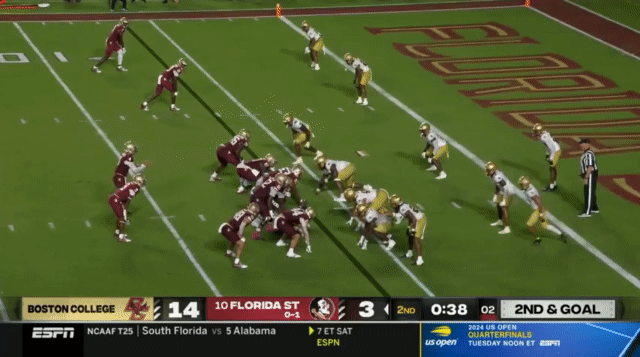
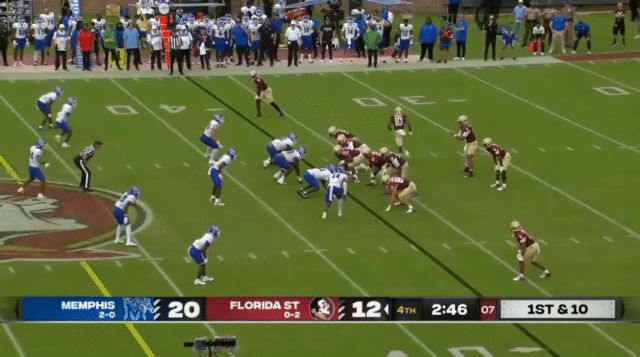
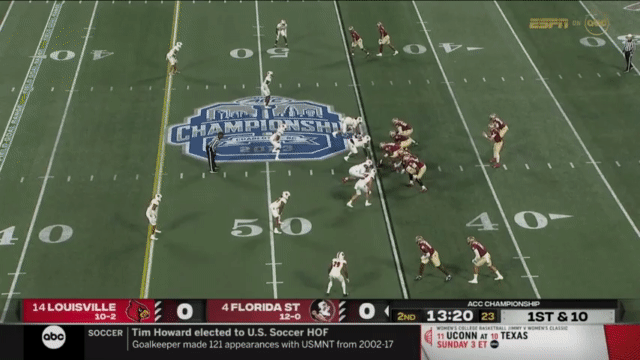
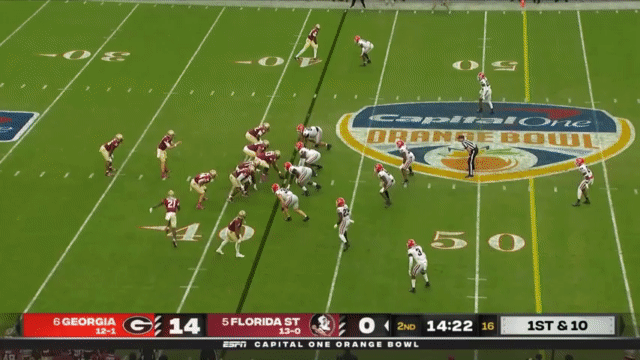
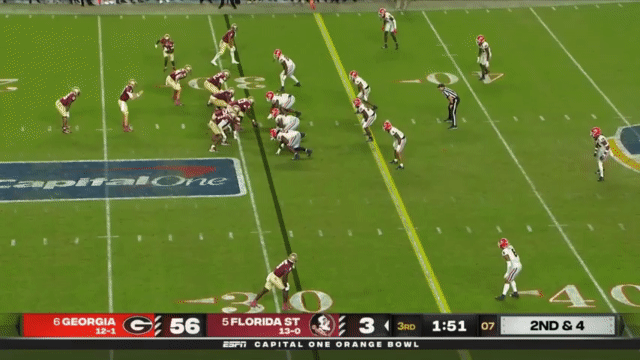
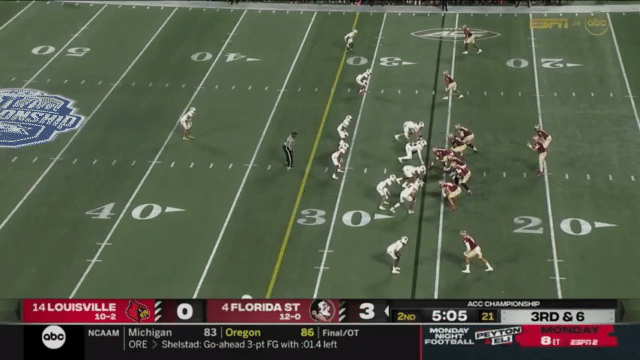
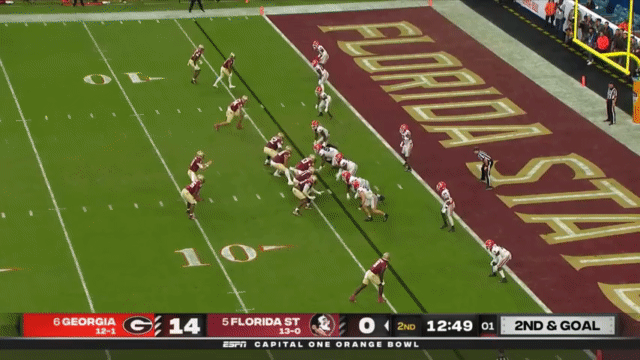
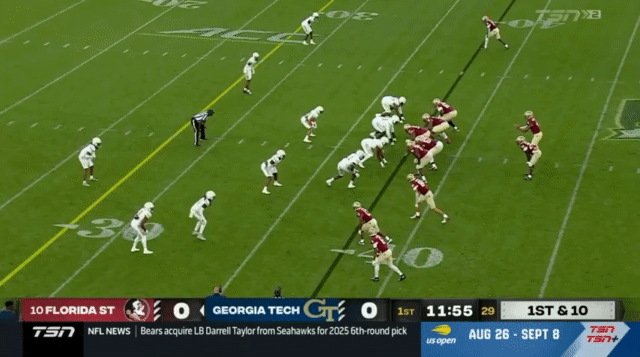
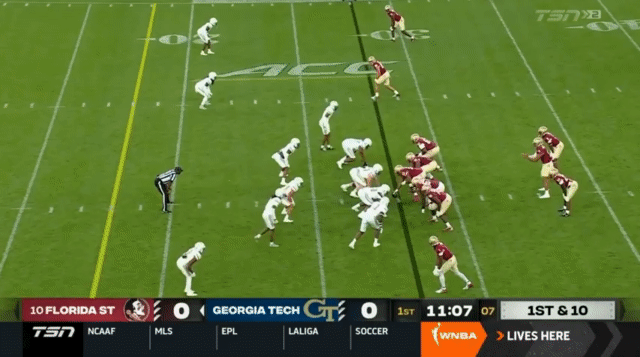
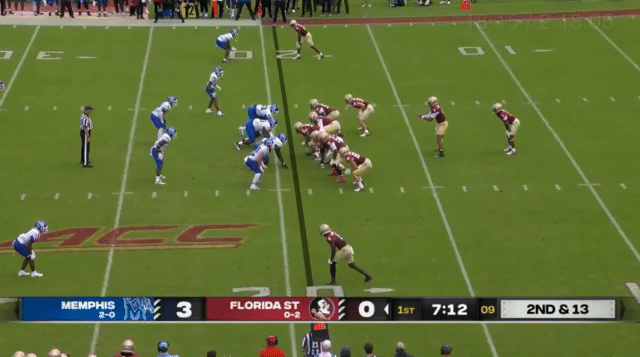
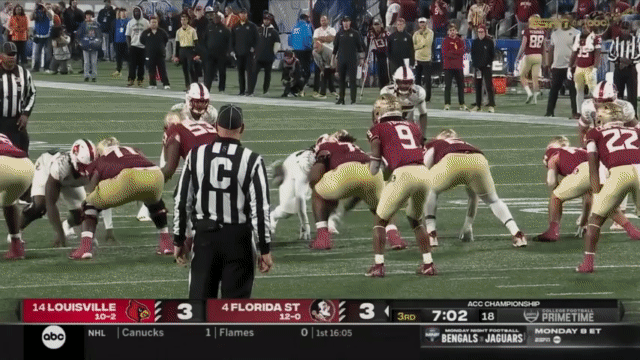
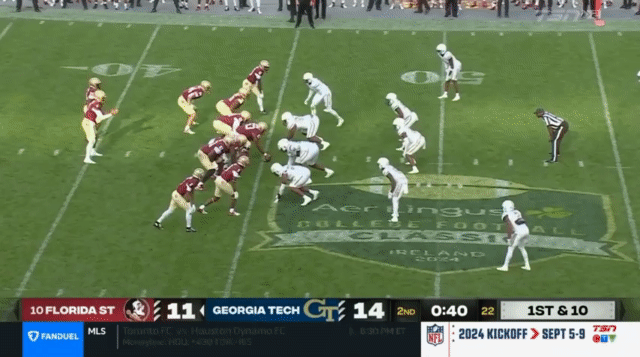
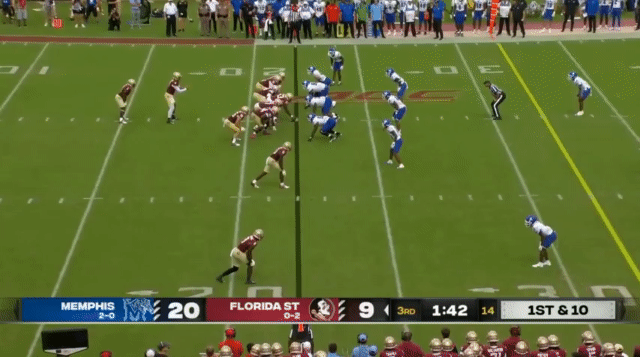

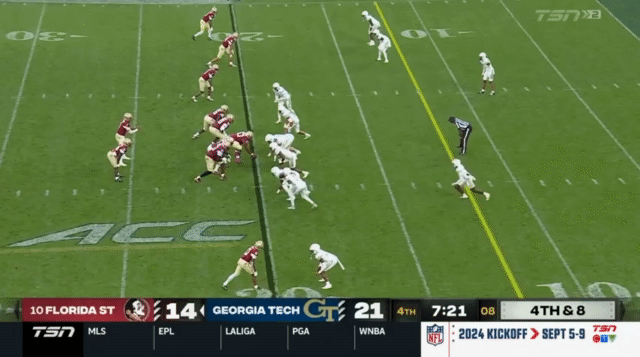
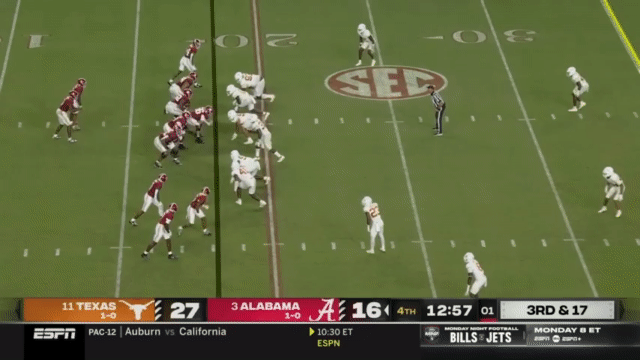
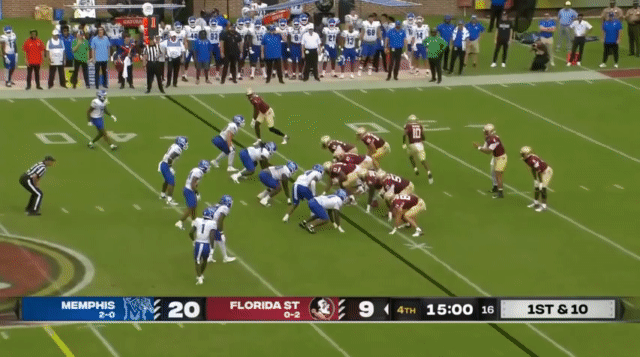
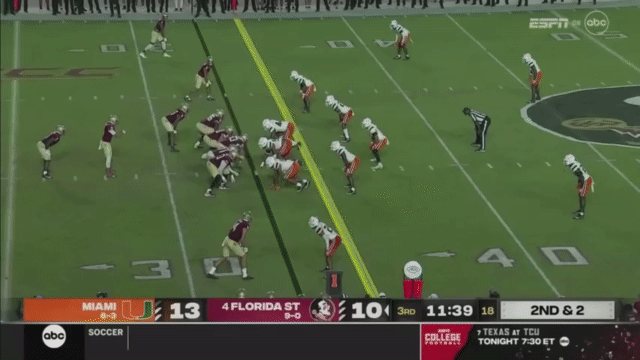
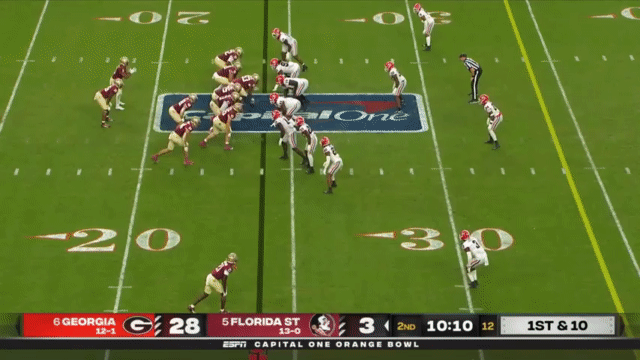
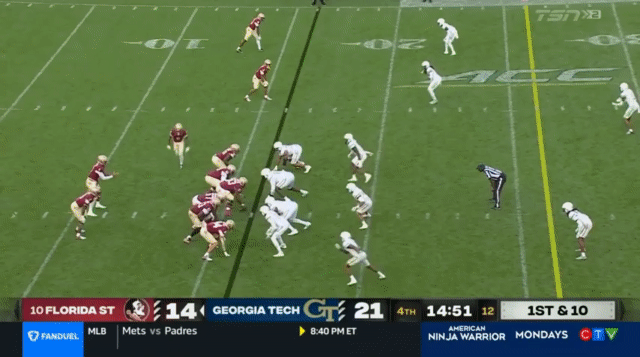
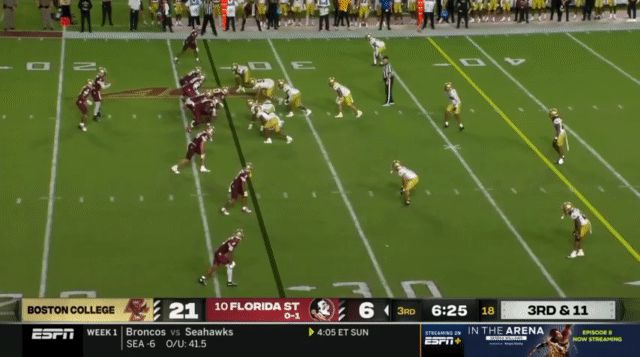
It will be ironic and amusing if CAL has a more successful season than FSU and as a result gets a bigger payout than FSU as a result of rewarding success.
So, will Sirmon take note of previous FSU games and load the box? Will he blitz? Or will he let DJ look like a Heisman candidate again? There should be no failure by Cal's defense this week. There is too much film on what worked the previous 3 weeks.
Go Bears!!